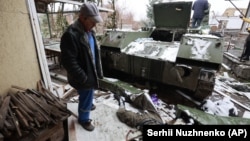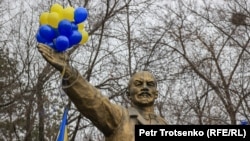Majlis Podcast: How Central Asians End Up Fighting In Russia's War In Ukraine
- By Bruce Pannier and
- Muhammad Tahir

On March 27, a 26-year-old native of Kyrgyzstan was buried in the city of Kara-Balta. On March 25, a 19-year-old man, also a native of Kyrgyzstan, was buried in Issyk-Kul Province.
Both were killed in Ukraine, where they were part of the invading Russian Army.
On March 22, two natives of Tajikistan were buried in their homeland. Both were serving in the Russian military and were killed in Ukraine.
All had moved from their homelands and taken Russian citizenship.
There is also the recent report from The Moscow Times that Central Asian migrant laborers in Russia are being recruited by the Russian military for duty in Ukraine.
On this week's Majlis Podcast, RFE/RL's media-relations manager for South and Central Asia, Muhammad Tahir, moderates a discussion on how people from Central Asia are ending up as part of Russia's war in Ukraine, and the attempts to recruit migrant laborers from Central Asia as well.
This week's guests are: from Washington, Sher Khasimov, a freelance journalist from Tajikistan and co-author of The Moscow Times report; from Prague, Salimjon Aioub, director of RFE/RL's Tajik Service, known locally as Ozodi; Alisher Sydyk, director of RFE/RL's Uzbek Service, known locally as Ozodlik; and Central Asia analyst Bruce Pannier.
Listen to the podcast above or subscribe to the Majlis on iTunes or on Google Podcasts.








